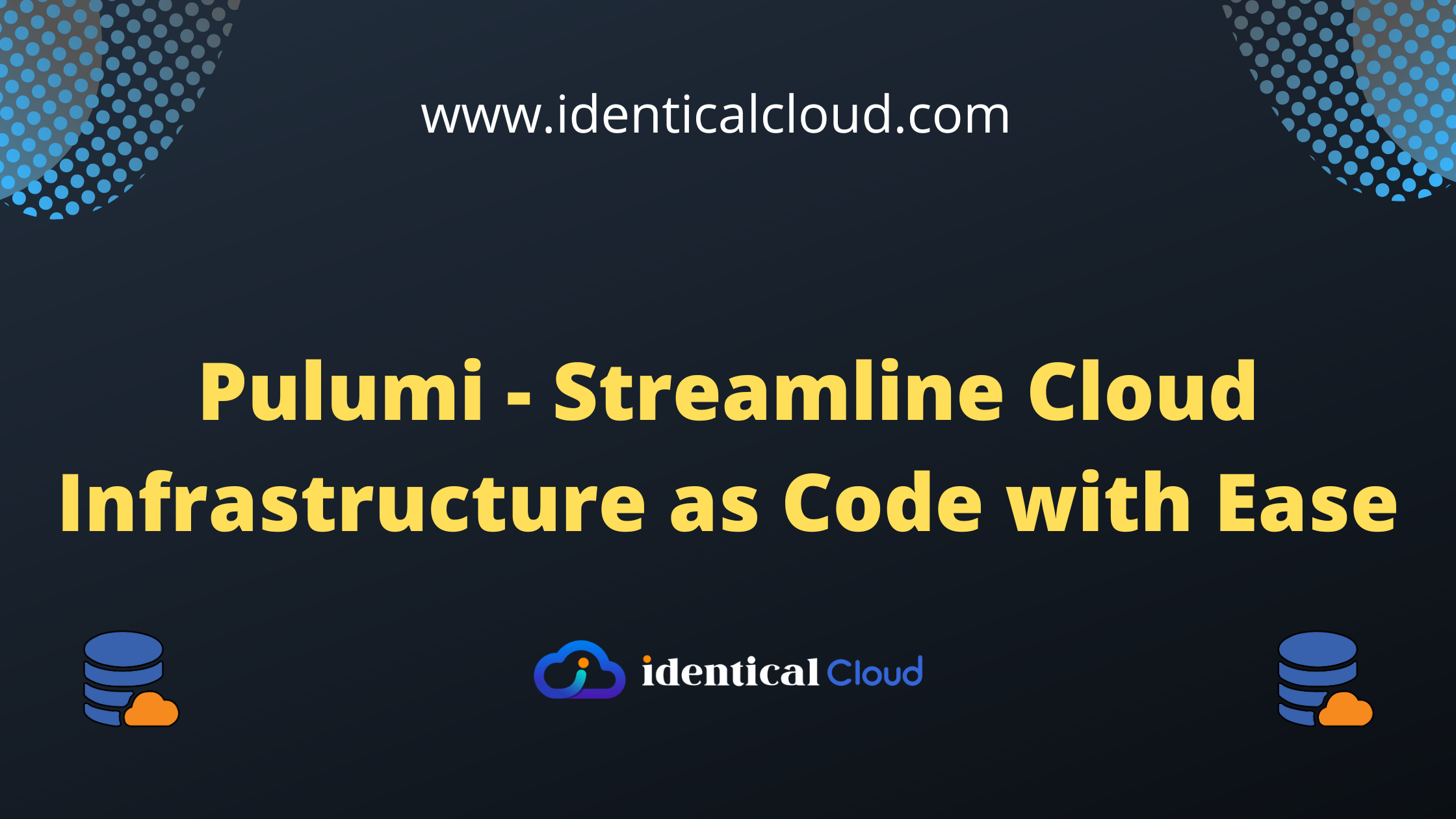
Pulumi – Streamline Cloud Infrastructure as Code with Ease
Pulumi – Streamline Cloud Infrastructure as Code
In the world of DevOps, managing and deploying cloud infrastructure efficiently is crucial for successful application development and deployment. Pulumi, an open-source infrastructure as code (IaC) tool, empowers developers and DevOps teams to define, deploy, and manage cloud resources using familiar programming languages.
In this blog, we will explore Pulumi in detail, including its description, key features, benefits, use cases, integration options, and learning resources. Let’s dive into the world of Pulumi and discover how it can revolutionize your infrastructure provisioning and management.
Pulumi
Pulumi simplifies the process of defining, deploying, and managing cloud resources by leveraging popular programming languages such as Python, JavaScript, TypeScript, and more. Unlike traditional IaC tools that use domain-specific languages (DSLs), Pulumi allows you to write infrastructure code using the programming languages you already know and love. It provides a consistent and intuitive experience across multiple cloud providers, including AWS, Azure, Google Cloud Platform, and Kubernetes.
Pulumi Key Features:
- Infrastructure as Code (IaC) approach:
Pulumi enables you to define and manage cloud resources using code, treating infrastructure as part of your application codebase. This approach brings benefits such as version control, code review, and collaboration. - Multi-cloud support:
With Pulumi, you can seamlessly work across different cloud providers and Kubernetes. This flexibility allows you to adopt a multi-cloud or hybrid cloud strategy while using a consistent set of tools and workflows. - Programming language support:
Pulumi supports popular programming languages, allowing you to write infrastructure code in a language you’re comfortable with. This eliminates the need to learn a new DSL and enables code reuse and sharing across different projects. - Declarative syntax:
Pulumi’s declarative syntax allows you to define cloud resources, their configurations, and their relationships in a clear and concise manner. This makes it easier to understand and maintain your infrastructure code. - Continuous Deployment (CD) capabilities:
Pulumi integrates seamlessly with CI/CD tools, enabling automated deployments and continuous delivery of infrastructure changes. You can easily incorporate Pulumi into your existing deployment pipelines and workflows. - Integrated monitoring and observability:
Pulumi provides built-in monitoring and observability features, allowing you to gain insights into your infrastructure and applications. You can integrate with popular monitoring tools like Prometheus and Grafana to track performance and troubleshoot issues.
Pulumi Benefits:
- Increased productivity:
Pulumi’s use of familiar programming languages boosts developer productivity. Developers can leverage their existing skills and knowledge to define infrastructure, reducing the learning curve and accelerating development cycles. - Enhanced code reusability and modularity:
By using programming languages, Pulumi promotes code reusability and modularity. You can encapsulate infrastructure components into reusable modules, reducing duplication and improving maintainability. - Reduced time and effort:
Pulumi streamlines infrastructure provisioning and management tasks, saving time and effort. The use of code-based infrastructure enables automation, eliminates manual configuration, and minimizes human errors. - Multi-cloud flexibility and portability:
Pulumi’s multi-cloud support allows you to adopt a flexible cloud strategy. You can deploy resources to different cloud providers or migrate workloads across clouds easily, ensuring portability and minimizing vendor lock-in. - Improved collaboration and team workflows:
Pulumi’s code-centric approach promotes collaboration among developers, operations teams, and other stakeholders. Infrastructure code can be reviewed, shared, and version-controlled, enabling effective teamwork and better code quality.
Pulumi Use Cases:
- Automating infrastructure provisioning and management:
Pulumi simplifies the process of provisioning and managing infrastructure resources across different cloud platforms. It is well-suited for automating infrastructure tasks and enabling Infrastructure as Code practices. - Cloud-native application development:
Pulumi enables developers to define and deploy cloud-native applications using code. It facilitates the creation of infrastructure resources such as virtual machines, containers, databases, and networking components required for modern application architectures. - Continuous Deployment (CD) and continuous delivery pipelines:
With Pulumi, you can integrate infrastructure changes into your CI/CD pipelines, enabling automated deployments and continuous delivery. Infrastructure updates can be version-controlled, tested, and deployed alongside application code changes. - Hybrid and multi-cloud deployments:
Pulumi’s multi-cloud support makes it an ideal choice for hybrid cloud and multi-cloud deployments. You can define and manage resources across different cloud providers and on-premises infrastructure using a unified set of tools and workflows. - Serverless application development:
Pulumi simplifies the provisioning of serverless resources, such as AWS Lambda functions or Azure Functions, through code. It allows you to define serverless infrastructure alongside your application code and deploy them together.
Pulumi Integration:
Pulumi offers seamless integration with various tools and services, including:
- CI/CD tools: Jenkins, GitLab, GitHub Actions, etc.
- Cloud provider APIs and services: AWS, Azure, Google Cloud Platform, etc.
- Monitoring and logging tools: Prometheus, Grafana, Datadog, etc.
- Configuration management tools: Ansible, Chef, Puppet, etc.
- Container orchestration platforms: Kubernetes, Docker, etc.
Pulumi Learning Resources:
To learn more about Pulumi and get started with using it effectively, you can explore the following resources:
- Official documentation and tutorials on Pulumi’s website
- Community forums and discussion boards for interacting with other users and seeking help
- Online courses and video tutorials offered by Pulumi or third-party platforms
- Blogs and articles by experts in the DevOps community, sharing tips, best practices, and use cases
- Webinars and conference talks by Pulumi team members, providing insights and demonstrations
Pulumi revolutionizes infrastructure provisioning and management by allowing developers and DevOps teams to define cloud resources using familiar programming languages. Its multi-cloud support, declarative syntax, and seamless integration with existing tools make it a powerful choice for modern DevOps practices. Whether you’re automating infrastructure, deploying cloud-native applications, or adopting a hybrid cloud strategy, Pulumi empowers you to streamline your DevOps workflows and achieve infrastructure as code excellence. Explore Pulumi and unlock the full potential of infrastructure automation in your organization.
